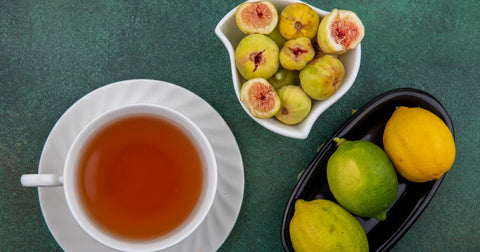Chayote squash, also known as mirliton or choko, is a versatile and nutritious vegetable that has been a staple in Central American cuisine for centuries. While it might not be as well-known as other squash varieties, chayote offers a range of health benefits and culinary possibilities.

If you're looking to expand your culinary horizons and add more nutrient-rich vegetables to your diet, this article explores the numerous benefits of chayote squash, its unique flavor profile, and how to incorporate it into your meals.
What is Chayote Squash?
Chayote squash is a member of the gourd family, related to cucumbers, melons, and squash. It has a pear-like shape, a light green color, and a mild, slightly sweet flavor.
Chayote Benefits: A Nutritional Powerhouse
Chayote squash is low in calories and a good source of essential nutrients, including:
-
Fiber: Promotes digestive health and helps regulate blood sugar levels.
-
Vitamin C: A potent antioxidant that supports immune function and skin health.
-
Folate: Important for cell growth and development, especially during pregnancy.
-
Potassium: An electrolyte that helps regulate blood pressure and fluid balance.
-
Manganese: A trace mineral that plays a role in bone health and metabolism.
Benefits of Chayote: A Versatile Vegetable
1. Supports Digestive Health:

The fiber in chayote squash can help prevent constipation and promote regular bowel movements.
2. May Aid in Weight Management:
Low in calories and high in fiber, chayote squash can be a filling and nutritious addition to a weight loss diet.
3. Helps Regulate Blood Sugar:
The fiber and low glycemic index (GI) of chayote squash can help regulate blood sugar levels, making it a suitable choice for individuals with diabetes or those at risk.
4. Promotes Heart Health:
The potassium and fiber in chayote squash can contribute to heart health by lowering cholesterol levels and regulating blood pressure.
5. Boosts Immune Function:
Vitamin C and other antioxidants in chayote squash support a healthy immune system.
6. Versatile and Delicious:
Chayote squash can be enjoyed raw or cooked and adds a unique flavor and texture to various dishes.
Chayote Recipes: Culinary Inspiration
Chayote squash can be prepared in numerous ways:

-
Salads: Add raw, shredded chayote to salads for a crunchy texture.
-
Stir-fries: Slice or dice chayote and add it to your favorite stir-fry recipes.
-
Soups and Stews: Cube chayote and add it to soups and stews for a hearty and nutritious addition.
-
Roasted: Roasted chayote makes a delicious and healthy side dish.
-
Stuffed: Halve chayote and stuff it with your favorite fillings, such as vegetables, cheese, or ground meat.
How to Cook Chayote:
Chayote squash can be cooked in various ways, including:
-
Boiling: Boil chayote until tender, then add it to salads or other dishes.
-
Steaming: Steaming helps preserve nutrients and flavor.
-
Sauteing: Saute sliced or diced chayote with your favorite vegetables and seasonings.
-
Baking: Bake cubed chayote with herbs and spices for a healthy side dish.
What Does Chayote Taste Like?
Chayote squash has a mild, slightly sweet flavor, often compared to a cross between a cucumber and a zucchini.
Food Intolerance and Digestive Health
While chayote squash is generally well-tolerated, some individuals might experience digestive issues after consuming it. This could be due to a food intolerance or sensitivity.
Food Sensitivity Test Kit: Identify Your Triggers
If you experience digestive discomfort after consuming chayote squash or other foods, consider taking a food sensitivity test kit. This can help you identify specific foods that might be triggering your symptoms, allowing you to make informed dietary choices and improve your gut health.
Key Takeaways:

-
Chayote squash is a nutritious and versatile vegetable with various health benefits.
-
It can support digestive health, weight management, blood sugar control, and immune function.
-
If you experience digestive issues after consuming chayote squash, consider a food sensitivity test to identify potential food intolerances.
Remember, this article is intended for informational purposes only and should not be considered a substitute for professional medical advice. If you have any concerns about your health or dietary choices, consult a qualified healthcare professional.
Frequently Asked Questions:
1. Is chayote a fruit or a vegetable?
Botanically, chayote is a fruit, as it contains seeds and develops from the ovary of a flowering plant. However, due to its mild flavor and savory applications in cooking, it's often treated as a vegetable in culinary contexts.
2. How do I choose a ripe chayote squash?
Look for chayote squash that is firm and heavy for its size, with smooth, unblemished skin. Avoid those that are overly soft or have wrinkles or bruises.
3. Can I eat the skin of chayote squash?
Yes, the skin of chayote squash is edible and a good source of fiber and nutrients. Be sure to wash it thoroughly before consumption.
4. What are some creative ways to use chayote squash in recipes?
Chayote squash is incredibly versatile! You can add it to stir-fries, soups, stews, or salads. You can also stuff it with your favorite fillings, roast it with herbs and spices, or even use it to make a healthy version of french fries.
5. I'm experiencing digestive issues after eating chayote squash. Could it be a food intolerance?
Yes, it's possible to have a food intolerance or sensitivity to chayote squash. If you experience symptoms like bloating, gas, or diarrhea after consuming it, consider a food sensitivity test to identify potential triggers and make informed dietary choices.


.png?v=1737390083)
.png?v=1737187409)


